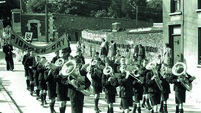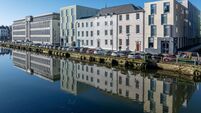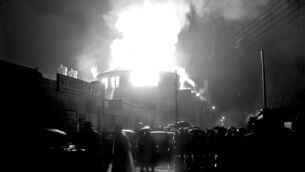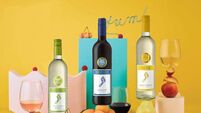North Mon school pals reunited by memories
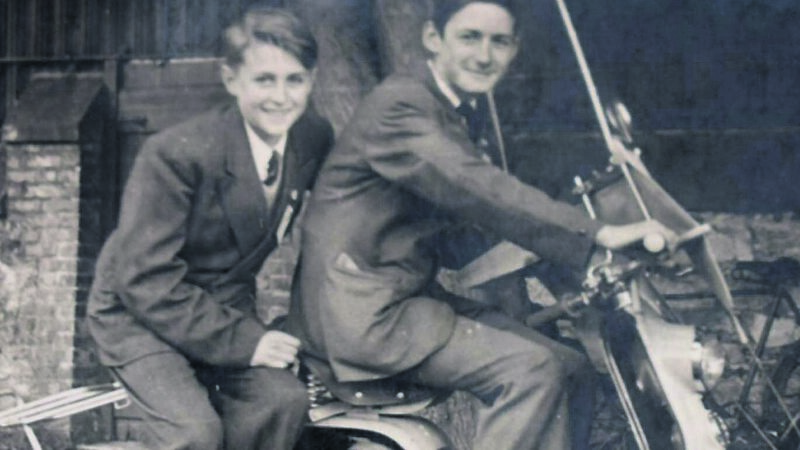
North Mon classmates Mike English (left) and Richard Goodison borrow a prop for a photo shoot while selling programmes at a Cork City Sports event held at the Mardyke around 1956
NOW here is another of those great coincidences that Throwback Thursday often manages to create!
You will remember that last week we featured the memories of Richard Goodison and Mike English, both of whom found summer work in and around the city, whether fruit picking or farm labouring. Richard was on to me almost immediately:
“I presume you don’t know, but Mike English was my best friend, since we both started secondary schooling at the North Mon and sat next to one another. And now you have placed us here together in your Throwback Thursday, truly amazing.”
Isn’t that totally accidental pairing extraordinary, he asks?
Well it is, Richard. I know both of you well by this time through our frequent correspondence, but never realised that you knew each other! A writer from the Northside, a photographer from the Southside, and you shared a desk at school. Well there you go.
“Mike and I began in the Mon after we completed our Primary Cert tests,” explains Richard. “We met in the school yard. We both did so well in the Mon entrance exam that we were eligible to skip first year and join a scholarship class in second year, and we opted for this.
“Mike told me later that it was I who persuaded him to move to second year. Maybe it was a mistake, in my case anyway, as I never caught up in maths afterwards!
“We had a good friendship, we sat together, and as happens in really happy friendships, there was no drama.”
And both, it seemed, were already leaning towards their chosen creative fields rather than the games loved by so many schoolboys.
“We didn’t join the others for sports training, etc. On one occasion, though, it was made compulsory to go to the Mon Field for training, so off we went up to the top of Gurranabraher. We weren’t called onto the field, and then it started to snow so we gave up and never went again.
“However, we keenly supported the school teams at their matches, especially for the Harty Cup. I even wrote two long stirring poems supporting hurling teams. Those appeared in the school magazine, The Monsoon. That was around 1955.”
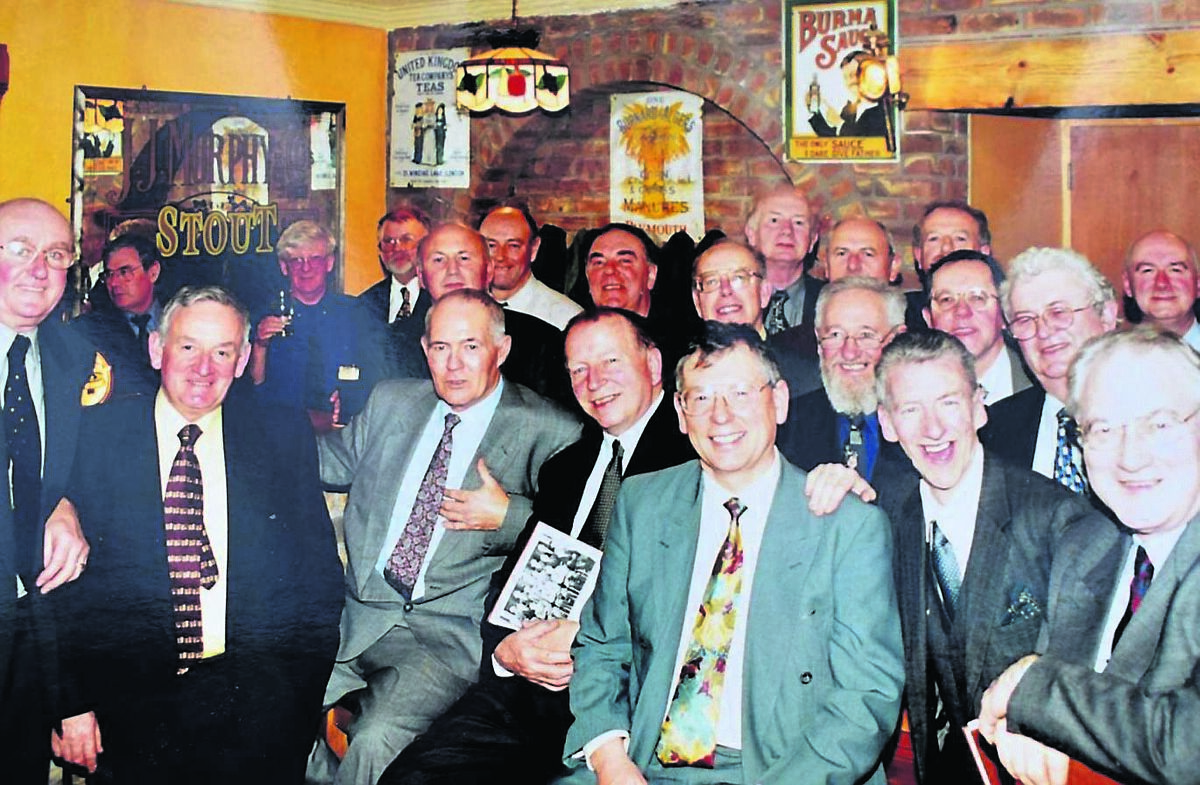
And since that time, Mr Goodison has published several collections of poetry, including The Goldfinches, and The Sighting and his work regularly appears in The Echo’s letter pages.
So, even at school he was already honing his craft, while Mike instinctively took to the camera to capture the world in images, a career in which he has distinguished himself all his life.
Mike English contributes his own memories of their friendship.
“Richard was very musical, and still is. He was happy playing the classics or rock and roll. He was always good at our poetic efforts, and still is. His art work was much admired too.
“I remember being very impressed with scenes from Ferrycarrig which he painted on scallop shells, amongst other things. He was also involved in artwork for North Mon publications which were produced prior to the Harty Cup finals.
“We came from different sides of the city of course, Richard from Gardiner’s Hill, and I hailed from Bishopstown (which was really in the country back then), but we were both selected to skip first year, after about a week in school, and I think that was how we hit it off.”
Mike obligingly trawled his archives and sent us two pictures. The first shows the two friends back in the mid-1950s, seated happily on somebody’s motor scooter (left). “I’m on the left, the passenger seat, with Richard in driving mode,” says Mike.
The second is a group shot taken at a school reunion some years ago for the class of 1959 (right). Mike is on the extreme left, while Richard is on the extreme right in the background. All those years gone by and still they’re friends.
A few readers have queried the location of the farm where Mike did summer work in the 1950s. His answer is a stark reminder of just how much that part of Cork has changed over the past half century or so, moving inexorably from rural countryside to heavily developed suburbia.
“The farm belonged to Tim Sheehan whose house was on the Curraheen Road, roughly where the Firgrove chemist is now. His yard and sheds, etc, would have been where Dunnes are now building.
“His land comprised of Firgrove and Westgate Estates and stretched up as far as the GAA Club (though the GAA club is on lands owned by Buckleys who had an entrance from Model Farm Road.)”
Mike adds: “Part of Sheehan’s land had an old quarry which is/was close to Highfield Rugby Club, and this area was known as Sandy Hill. In times past, there was a lane leading up to that near where the Savings Bank (now closed) is.
“Tim Sheehan also owned one field at the southern side of Curraheen Road where the Outpost Bar is situated. He sold a strip of land between his house and the now Savings Bank for building the first of Firgrove (the trees, or at least some of them, are still there).
“He also went into the pub trade, becoming the owner of The Viscount Bar (now the Credit Union). It was called the Viscount as the planes to the airport flew over quite close.”
You wonder if any of the kids playing around these estates today could possibly believe that, beneath the roads and the pavements, under those semi-detached villas, lies a whole forgotten world of rich farmland?
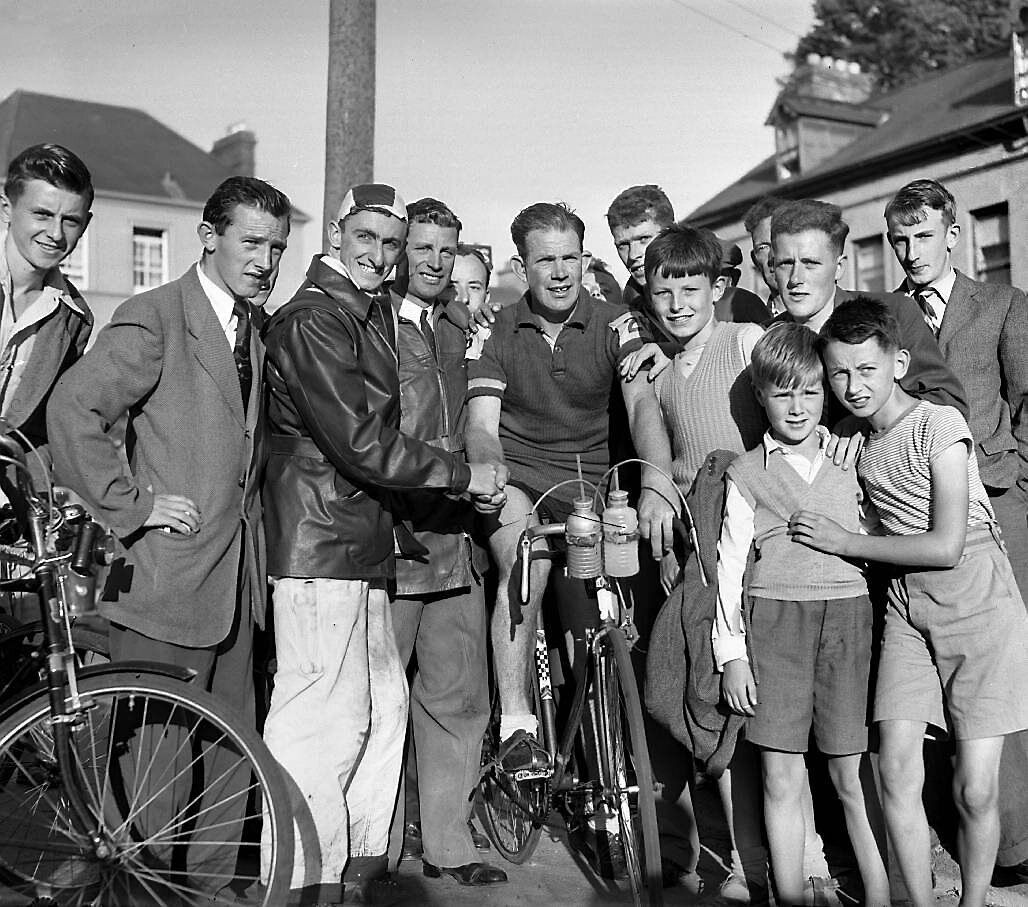
How Bishopstown has changed. And what a memory you have, Mike!
Interestingly, as we were tracing the location of that former farm on the modern map of the area, we discovered Murphy’s Farm. Yes, it’s named clearly on the map, between Uam Var and Glasheen AFC, go and look for yourself!
Of course, it’s not a farm any more, it’s just a lane, but miraculously it still encapsulates the memory of times past, when a real Farmer Murphy tilled his fields and minded his stock. Street names can tell you a lot if you look closely.
Mary Holly was delighted to read the stories of fruit picking.
“Oh Jo, Throwback Thursday brought me back! We spent our summer holidays in Courtmacsherry, but it was certainly not all swimming and tennis. It also entailed visits to Travers in Timoleague and to Mr Robinson at Lislee for raspberries and strawberries - and not all for eating. Were we the only family to come on holidays with jam jars so that mum might seize the opportunity to make a few pounds of preserves?
“When summer ended and we unwillingly returned to the city and school, we always had the weekends to look forward to. September saw us head back in the direction of Courtmac’, maybe a quick swim if the weather was holding up, and then blackberry picking before having a picnic. Later still, it would be time to collect crab apples. The same crab apple trees were staked out year after year. Dad brought his trusty walking stick with which he hooked down the branches for mum and us to gather the apples.
“Mum preferred to make jelly with the blackberries and the crab apples. This entailed boiling the fruits to pulp, but first preparations had to be made to strain the resultant mush.
“Muslin would have been bought in Murray’s on the Grand Parade. Two kitchen chairs were placed about 3ft apart, backs facing each other, in the dining room, where there was no danger of them being knocked by children.
“A broom handle would be retrieved from the shed and this would be placed on top of the chair backs. Then the muslin would be tied on to the broom handle in such a way as to make a straining bag.
“A large earthenware bowl would be placed underneath on top of newspapers (these would protect the floor from sticky splashes). When the blackberries or crab apples were reduced to pulp, they were poured into the straining bag and left to drain overnight.
“Woe betide anyone who poked or touched the straining bag to encourage the liquid to fall through more quickly, because this would cause the liquid to cloud and the resultant jelly would not be clear!
“Next day, the strained liquid was measured into the large preserving saucepan and the amount of sugar required was calculated. This was added to the pan and the mixture was boiled until setting point was reached.
“To test for setting, every so often, mum would take a spoonful and put it on a saucer. It if wrinkled when pushed with a finger after it had cooled, the jelly was ready for potting. While the boiling process was going on, the clean jam jars would have been heating in the oven on a low heat to sterilize them.
“More newspaper was needed to cover the kitchen table when the potting process took place. With the best will in the world, it was a messy business.
“Thus the Holly family had preserves to last them through the winter!”
Glorious memories, Mary, and we wonder if anyone still makes their own preserves each autumn, that ancient urge to prepare for the harshness of winter when food may be scarce?
Kevin Long loves Throwback Thursday which he describes as “a fantastic insight into the past”. A keen cyclist and promoter of the Cork Cycling Campaign, Kevin wants to let everybody know that as part of Cork Heritage Week (running from August 12-20), he will be holding a talk and photo exhibition on the history of cycling in our city and county on August 12 at 2.30pm, in the City Library.
All details are in this link: https://www.heritageweek.ie/event-listings/cycling-cities-the-cork-experience.
Mr Long is hoping that people going to the talk might bring their own stories, information and even photos of cycling in Cork from days gone by.
He thought of contacting us because we have from time to time featured anecdotes and pictures of days gone by when bike travel was commonplace, and thinks there must be many more untold stories and memories out there.
“A project we are hoping to get done for Cork is a history of urban cycling over the past century. I’ve been in touch with the publishers of the Cycling Cities series (www.cyclingcities.info) and we are gathering as much information as possible.”
Well, here is one tale you have probably not heard, Kevin (or indeed anyone else). Is my own dad (the legendary Joey Kerrigan) the only Corkman ever to be the subject of a police request to stop him cycling in public?
Yes, it’s entirely true. Papa was still cycling energetically around the city in his late 80s, serenely ignoring the fact that the streets were a lot more crowded and cars a lot faster than the 1930s when he habitually pedalled out to climb Carrauntuohill and back again at weekends.
After a few near misses, the gardaí discreetly contacted my brother to ask if he could possibly discourage Joey from these jaunts. Of course, Papa took no notice, and went on whizzing up and down the hills. So, Tommy, worrying about the risks involved for someone almost in his nineties, took away the bike.
Annoyed, Joey made the loss known among his numerous friends, with the result that he was immediately swamped with several bicycles, donated by kind friends.
What do you do? (All together now: Go on cycling, of course!...)
Tell us your memories. Email jokerrigan1@gmail.com. Or leave a comment on our Facebook page: https://www.facebook.com/echolivecork.

